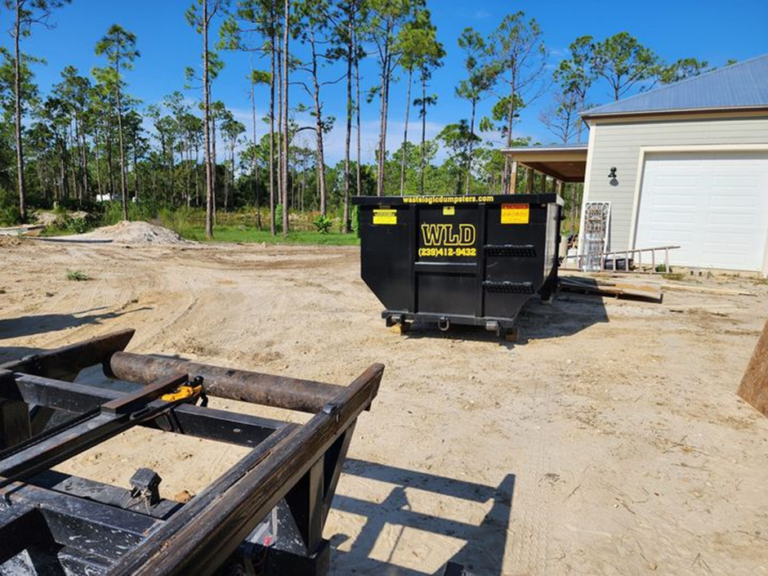One critical aspect of managing a construction project that is often overlooked is efficient waste management. With high disposal costs and environmental concerns, maximizing Construction Dumpster space and minimizing waste can save money and time. Here are ten tips to help you get the most out of your construction dumpster while minimizing unnecessary waste.
1. Plan With Waste Segregation
One of the simplest ways to maximize dumpster space is to plan. Before the project begins, segregate waste materials by type—wood, metal, concrete, and general debris.
Some of these materials can be recycled, reducing the waste that needs to go into the dumpster. This also helps prevent overfilling the dumpster with bulky items that could be recycled elsewhere.
2. Use Recyclable And Reusable Materials
Opt for materials that can be recycled or reused in future projects. Excess wood or metal can often be stored for future use, while broken concrete can sometimes be repurposed for other construction purposes like landscaping or foundations.
By incorporating recyclable materials into your project, you reduce the volume of waste in the dumpster and contribute to sustainable building practices.
3. Break Down Large Items
Large construction materials such as wood panels, metal frames, and even drywall can take up excessive space in your dumpster. Before disposing of these items, break them down.
Flatten boxes, disassemble larger structures, and cut wood and metal into smaller, more manageable pieces. This simple practice can easily double the available Lee County Dumpster rental space.
4. Compact Debris Regularly
As your project progresses, the debris in the dumpster will begin to accumulate. To make the most out of the space, compact the waste regularly.
Use shovels, sledgehammers, or specialized equipment to compress materials, particularly bulky items like insulation, packing materials, or foam.
By compacting the debris, you free up space for more waste, avoiding the need for additional dumpster rentals.

5. Recycle Heavy Materials
Heavy materials like concrete, asphalt, and bricks are among construction projects’ most significant contributors to waste volume. Instead of dumping them into the dumpster, take them to a recycling center.
Many facilities will accept these materials for free or at a lower cost than landfill disposal. This not only conserves dumpster space but also cuts down on disposal fees.
6. Donate Or Sell Usable Materials
Not all construction waste is unusable. Good-conditioned doors, windows, cabinets, and fixtures can often be donated to organizations like Habitat for Humanity or sold online.
By finding new homes for these materials, you keep them out of the dumpster and potentially earn a tax deduction or additional income.
7. Avoid Overfilling
Stacking materials above the dumpster’s edges might seem tempting to fit in as much waste as possible, but this is unsafe and illegal in most areas.
Overfilled Fort Myers dumpsters can lead to dangerous conditions on the construction site, attract fines, and require additional labor to fix the problem. Always keep waste below the top edge of the dumpster to ensure safe disposal.
8. Choose The Right Dumpster Size
Choosing the right-sized dumpster for your project can prevent unnecessary trips or overfilling. A small dumpster might seem like a cost-saving option, but if it fills up too quickly, you’ll need to rent another one, leading to higher costs and project delays.
Assess your project’s waste needs and opt for a slightly larger dumpster than necessary. This gives you room to spare without risking overages or multiple rentals.
9. Use Multiple Dumpsters For Different Waste Types
If your construction project generates various waste types, consider renting multiple dumpsters—one for general debris, one for recyclable materials, and perhaps one for hazardous waste.
This allows you to separate materials and maximize space efficiently. Dangerous materials, in particular, often require specific disposal methods, so keeping them separate avoids contamination of other waste types.
10. Train Workers On Waste Management
Finally, one of the most effective ways to maximize dumpster space is to educate your workers on proper waste management.
Ensure that everyone on-site understands the importance of waste segregation, breaking down materials, and using recycling options.
A well-informed team will naturally generate less waste and use the available dumpster space better.
Conclusion
Maximizing construction dumpster space and minimizing waste is not only an environmentally responsible practice but also a cost-effective one.
By planning, breaking down materials, recycling, and educating your team, you can significantly reduce the amount of waste generated on your construction site.
Implement these ten tips to make the most of your dumpster and contribute to more sustainable building practices.
At WasteLogic Dumpsters LLC, we understand the importance of efficient waste management in construction projects.
Our team is committed to helping you choose the right dumpster for your needs while offering practical solutions for maximizing space and minimizing waste.
Applying these strategies can streamline your operations, reduce disposal costs, and lessen your environmental impact.
Partnering with us ensures you have the tools and support to implement responsible waste management practices, making your construction projects efficient and sustainable. Let WasteLogic Dumpsters LLC be your go-to resource for smarter waste solutions.

